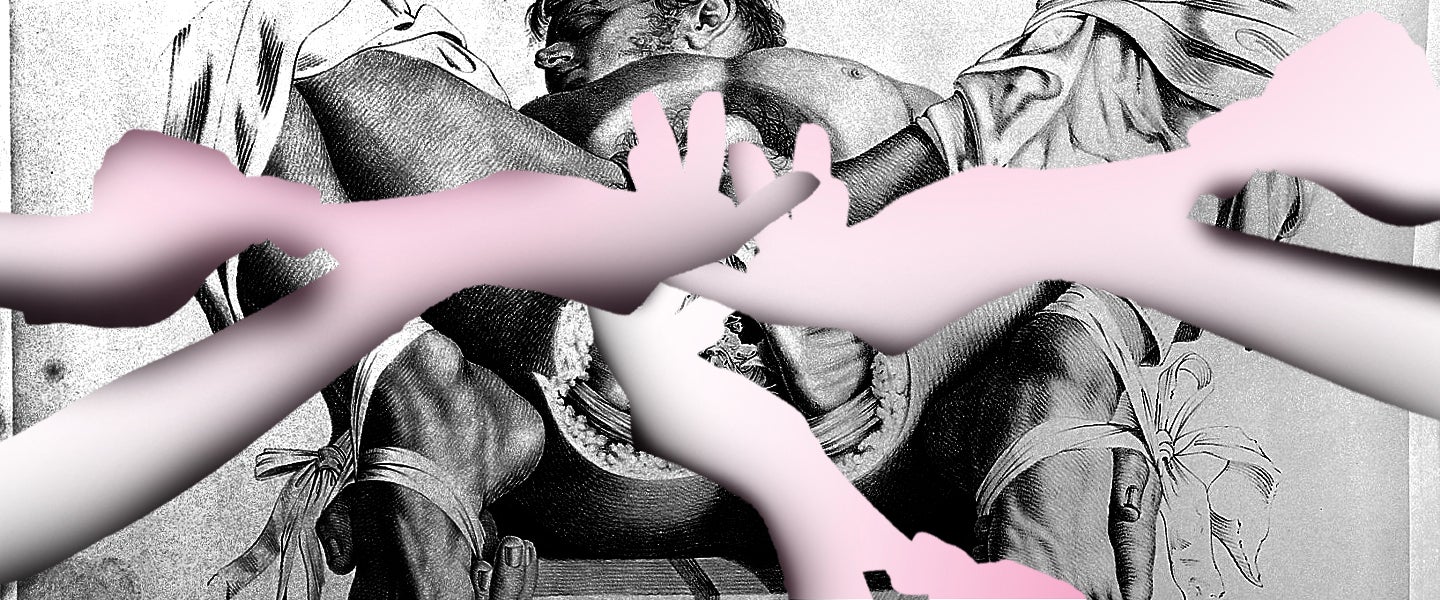Life is hard when you’re a male gynecologist. Apart from having to face the constant assumption that you’re a creep who paid hundreds of thousands of medical school dollars to look at vaginas all day, patients’ growing demand for female doctors who won’t assault them a la George Tyndall means men are all but disappearing from the profession. Generally speaking, women feel safer with female OBGYNs, a preference that really matters when your legs are in stirrups and the most vulnerable part of your body is being prodded with an extra-long Q-tip.
But, what about female urologists, the presumed ying to male gynecologists’ yang? Do women whose job it is to finger prostates, palpate testicles and fix limp erections face the same sort of stigmas and challenges that men who work with women’s bodies do?
To answer this question, it’s important to understand what urology actually is. While it’s famous for erectile dysfunction and medically mandated prostate milking, urologists also work with kidneys, bladders, the pelvic floor, and in some cases, the colon. In fact, women see urologists too, often for the same reasons men do — fertility, sexual dysfunction, incontinence, prolapse, bloody urine, kidney disease and certain forms of cancer. So while some urologists choose to focus on either male or female patients, many open their doors to all genders. In other words, the idea most of us have about female urologists working with male issues is only a fraction of a much broader practice.
However, if the specialty of urology isn’t necessarily gendered in the same way as gynecology, the field of it most definitely is. Urology is, and almost always has been, the medical speciality with the largest gender gap — according to a 2015 report, roughly 92 percent of urologists are men. That tide is turning though. As more female medical students learn that urology encompasses much more than penises and prostates — and that it offers a flexible, relatively low-stress lifestyle compared to other specialties — the number of women entering the field has been increasing at never-before-seen rates. Today, for example, 25 percent of urology trainees are women.
Needless to say, knocking down the door to the urology boys’ club ain’t always easy. For starters, some male patients still prefer to be seen by someone who’s more, er, “familiar” with their piping. To be precise, 42.8 percent of men would rather be examined by a man than a woman, for the express reason that below-the-belt exams and discussions about things like erectile dysfunction and prostate health can be “embarrassing.” Sometimes for obvious reasons — the embarrassment of having to admit their penis, prostate or bladder aren’t working properly. Other times, because they get inadvertently aroused during examinations and treatments. As one guy wrote on, of all things, an economics jobs forum, “I have a really hot urologist. … She’s like a really good-looking 40-year-old blonde woman, and it’s really hard not to get hard with her caressing my balls. I thought this would be a good thing, but not so much.”
Religion and marital status also matter for a smaller amount of men — the same study finding that some men feel that being examined by a female doctor is a breach of their marital fidelity, especially if they’re at the doctor’s office to be seen for something more sexually sensitive than say, a kidney stone.
Overall, Akanskha Mehta, a urologist and professor who specializes in male infertility at Emory University, tells me that she’s had a handful of patients over the years who “simply cannot get over the idea of a female physician.” She doesn’t get frustrated when it happens, though — she simply refers them out and moves on. “It’s a waste of my time to work with patients if my gender is a big deal to them,” she says.
On the flip side, a small percentage of male patients actually prefer to be seen by female urologists. Usually, explains Theresa Beam, the president of the Society for Women in Urology, this is because they’ve had traumatic experiences with men in the past and feel safer around women. Sometimes, they even confess it’s easier to talk to female doctors about sensitive issues — there’s less competition, and they don’t have to worry about “being compared.” However, if they’re too insistent on seeing a woman, it can be a red flag for the presence of other psychosocial problems. “There are times you have to be careful about a possible secondary gain the patient may be seeking,” notes Suzette Sutherland, the Director of Female Urology at the University of Washington, and a member of the school’s Women in Science and Medicine Board.
Which inevitably brings us to the question of sexual harassment from patients. Though there’s no data that describes exactly how common this is in urology, there does seem to be some concern in the community about whether female doctors face a particularly high risk. The Urology Times recently discussed this issue, writing that because the specialty deals with diseases of a sexual nature, routine examination and photography of genitalia — as well as intimate details of a patient’s sex life — it can “carry with it ‘special circumstances’ that may bear on the risk of harassment in the workplace.”
According to Mehta, this is a particular concern in urological subspecialties like male fertility, where the vast majority of patients are men. She says she’s faced several uncomfortable interactions with patients at her clinic, some that cross the line from discomfort into actual harassment. “I’ve had a handful of inappropriate patients,” she says. “They’ve done everything from comment on my appearance, to call me ‘honey’ (nothing aggravates me more), to masturbate in the office.” That, of course, creates the need for awkward, irritating conversations her male colleagues virtually never have to have. “I do think I have to set boundaries as a female physician more often than my male counterparts,” she says. However, she’s quick to acknowledge that the problem is rare — less than five percent of her patients, she estimates.
For her part, Beam, who sees both male and female patients, has never had to deal with harassment. Apart from a singular mishap in medical school — a fully naked dude once stood between her and the doorway of the exam room — she says patients are as well-behaved as patients in any specialty. Every now and then, there’s a bit of awkwardness during a a prostate exam or a sexual dysfunction assessment, but it doesn’t come close to the discomfort many female patients report feeling with male gynecologists.
By and large, Sutherland says patient interactions tend to go well, even when a female urologist is addressing a sexual issue with a male patient. “Despite what people think, it’s pretty tame,” she says. “Patients come in with a problem, and they want it fixed. Usually, everyone is so focused on the disease and treatment that things tend stay on track in a professional manner.” If male patients are shaking in their hospital gowns over having to talk to lady doctors about erections and prostates, it rarely becomes an issue.
Besides, Beam says there are some major perks to being a female urologist. “It’s a lot of fun,” she explains. “It’s an area in medicine that lends itself to lots of puns and jokes, most of which come from my patients. They love to bring in funny greeting cards that have urologic innuendo.” (What’s a urologist’s favorite keyboard shortcut? Ctrl + P.) There are also almost no urological emergencies — no one buzzes you in the middle of the night for a Viagra prescription — and many urologists get to practice a rare combination of medicine and surgery. The feeling of being part of a movement within a field is also exciting. Sutherland says the influx of women into urology gives patients more options for care, and has been infusing the specialty with a sense of optimism and renewed purpose.
Essentially then, the life of a female urologist, it appears, is almost nothing like that of a male gynecologist. While both specialties come with their own colorful challenges, there’s a growing demand for women in the field of urology, which means next time you need to pass a pea-size kidney stone, it might be a lady who comes to your rescue.
If you think otherwise, to quote from a bit of famous urologic innuendo, urine trouble.

